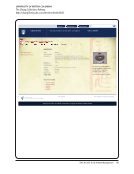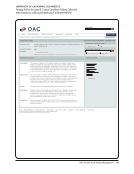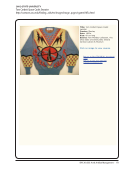SPEC Kit 333: Art &Artifact Management · 115
Washington University in St. Louis
Modern Graphic History Library Processing Manual
5
Accessioning
The accessioning process allows us to get basic intellectual control over the materials. Once the collection is
physically transferred to the MGHL, library staff will document the contents of the collection, their
condition, order, and its temporary location until processing occurs.
Arrangement
Arrangement is the way items, groupings, and collections are ordered to reveal their contents and
significance. It involves the physical organization of materials in accordance with the accepted archival
principles of provenance and original order. There are several steps involved in the arrangement process:
research, survey of records, physical arrangement, processing, re-‐housing, and labeling.
Objectives of Arrangement
• To provide a rational order in which individual documents or facts can be found with a modest
amount of search and analysis.
• To maintain (or restore) and present to researchers the original order of the papers or records as
evidence of how they were used by the creator and why they were created. The “sum of the whole is
greater than the parts” in that there is value in knowing what a person saved, what they did not
save, and how they organized the material.
• To identify potential preservation problems.
• To provide a basis for description.
Levels of Arrangement
• Repository: How collections are arranged on shelves (the MGHL uses a shelf list to locate
collections because alphabetical or chronological arrangement would require constant shifting as
new collections are added).
• Collection (also known as Record Group): Usually by provenance, or several related accessions may
be combined.
• Series and subseries: Logical breaks by content, arrangement, medium, or format.
• Folder: Sequential, alphabetical, chronological or some combination of these.
• Document: Usually sequential.
Types of Arrangement
• Original order (used whenever possible).
• Chronological
• Topical
• Alphabetical
• Combination
Washington University in St. Louis
Modern Graphic History Library Processing Manual
5
Accessioning
The accessioning process allows us to get basic intellectual control over the materials. Once the collection is
physically transferred to the MGHL, library staff will document the contents of the collection, their
condition, order, and its temporary location until processing occurs.
Arrangement
Arrangement is the way items, groupings, and collections are ordered to reveal their contents and
significance. It involves the physical organization of materials in accordance with the accepted archival
principles of provenance and original order. There are several steps involved in the arrangement process:
research, survey of records, physical arrangement, processing, re-‐housing, and labeling.
Objectives of Arrangement
• To provide a rational order in which individual documents or facts can be found with a modest
amount of search and analysis.
• To maintain (or restore) and present to researchers the original order of the papers or records as
evidence of how they were used by the creator and why they were created. The “sum of the whole is
greater than the parts” in that there is value in knowing what a person saved, what they did not
save, and how they organized the material.
• To identify potential preservation problems.
• To provide a basis for description.
Levels of Arrangement
• Repository: How collections are arranged on shelves (the MGHL uses a shelf list to locate
collections because alphabetical or chronological arrangement would require constant shifting as
new collections are added).
• Collection (also known as Record Group): Usually by provenance, or several related accessions may
be combined.
• Series and subseries: Logical breaks by content, arrangement, medium, or format.
• Folder: Sequential, alphabetical, chronological or some combination of these.
• Document: Usually sequential.
Types of Arrangement
• Original order (used whenever possible).
• Chronological
• Topical
• Alphabetical
• Combination


















































































































































































